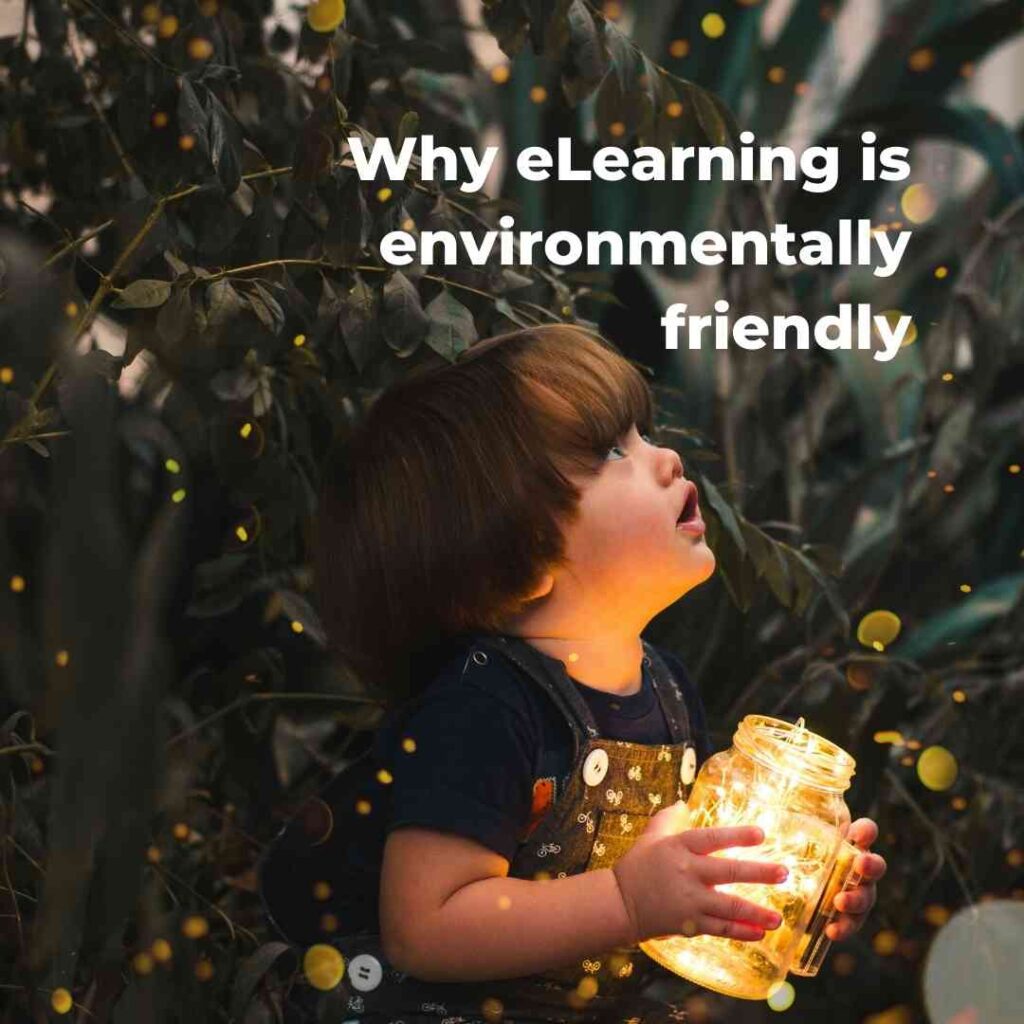
Why eLearning is environmentally friendly
The Coronavirus pandemic has fundamentally changed the lives of almost every person on Earth, and one major facet of this has been the virtualisation of working and learning environments. While it may take some time for us to fully adjust to all-online operations, it comes with a plethora of pros – including a positive impact on our planet’s environment.
eLearning reduces carbon footprint
It’s no secret that car exhaust pipes release carbon emissions, but exactly how much is a lesser-known fact. In a study done by the UK’s Open University Design Innovation Group (DIG), it was found that online learning “consumes an average of 90% less energy and produces 85% fewer CO2 emissions per student than conventional face-to-face courses.”

eLearning spares non-renewable resources
Another environmentally costly reality is that cars require oil, a non-renewable fossil fuel that is formed in the Earth over millions of years and is made up of decayed plants and animals. Oil can’t be readily replaced by natural means at a quick enough pace to keep up with the global consumption of it, so cutting down plays a large role in resource conservation.
eLearning ditches the paper trail
According to the Rainforest Alliance, deforestation causes roughly 10% of global emissions. To make matters worse, the same trees we are felling are crucial allies for combatting the accumulation of greenhouse gasses because they capture carbon dioxide and convert it into oxygen. By migrating online, old-school training booklets and written notes become a thing of the past. Digital copies of learning materials, including personalised learning platforms from New Leaf Technologies or educational apps such as MemoTrainerTM, replace paper waste and reduce the demand for chopping down trees.
Bonus benefits
In addition to all the good you’d be doing the environment by taking your corporate training online, there’s something in it for your company, too. eLearning can save you hordes of time if you hire professionals to get the job done, which is not nearly as costly as you might think. New Leaf Technologies has a free Training Cost Calculator that gives you an indication of how much you can save by taking your corporate training online.
Shifting to eLearning is a wise move from a marketing perspective because consumers generally tend to choose an environmentally friendly option over an ecologically inconsiderate alternative. A reduced carbon footprint makes for a polished corporate image.
‘Going green’ is not just another trend, it’s a responsibility that comes with advantages, and it may be as simple as switching to eLearning. With or without a global pandemic, eLearning is an excellent educational option that comes with quite compelling positive impacts. Something that saves time, money, materials, and the planet from CO2 emissions is a win/win by our standards.

By Emma Hanly




